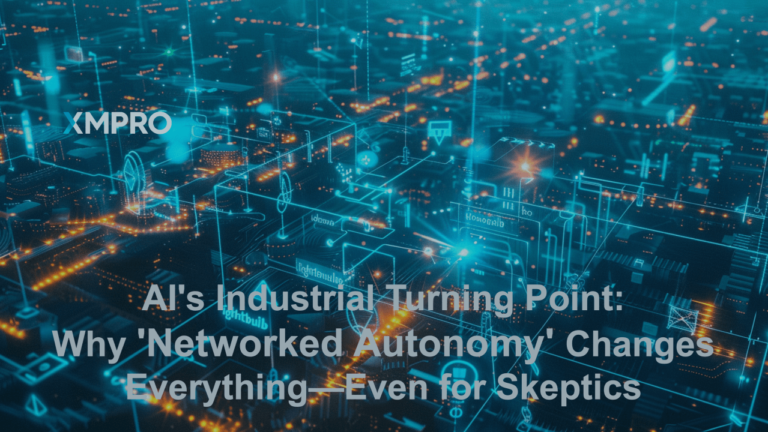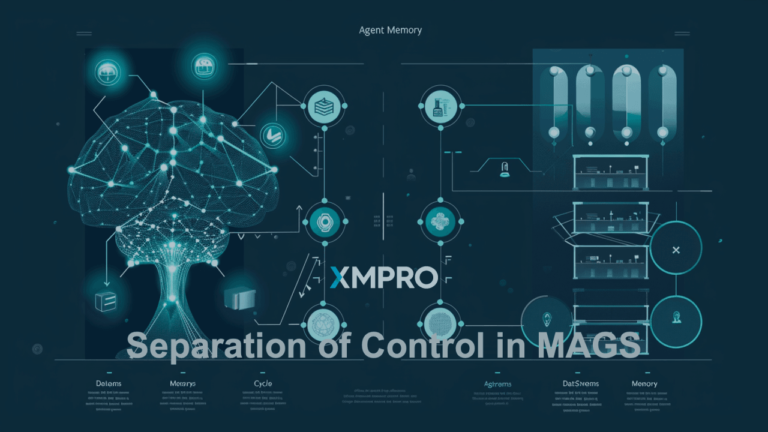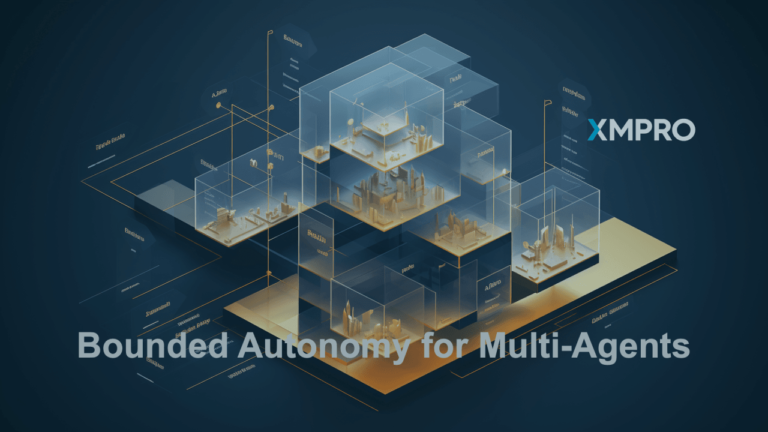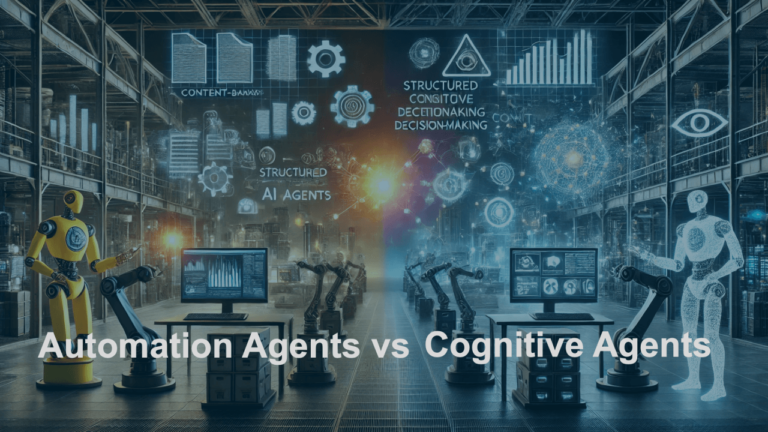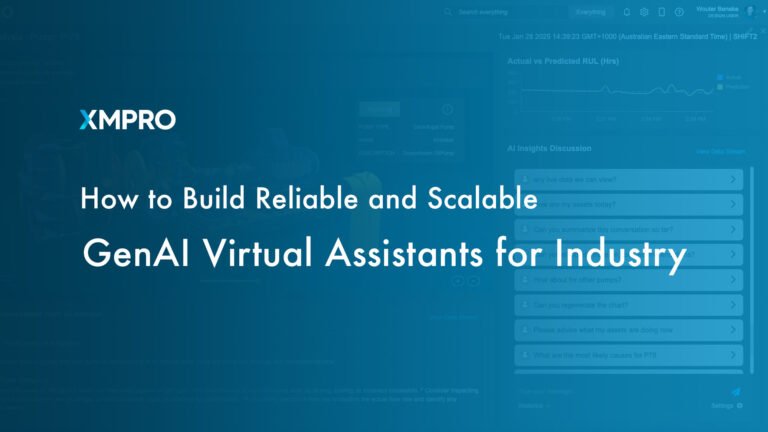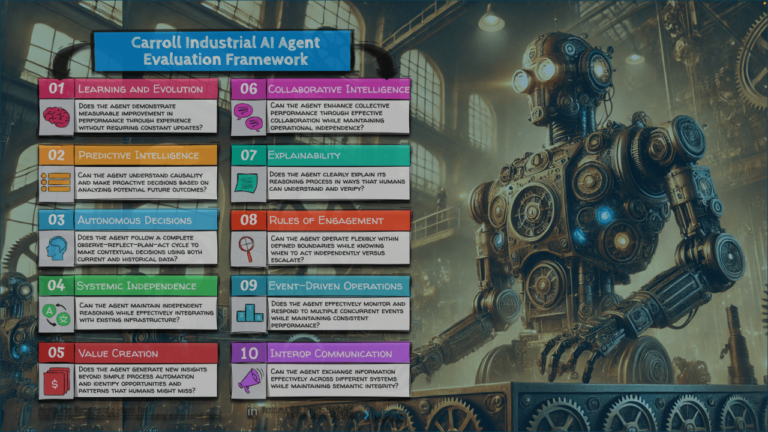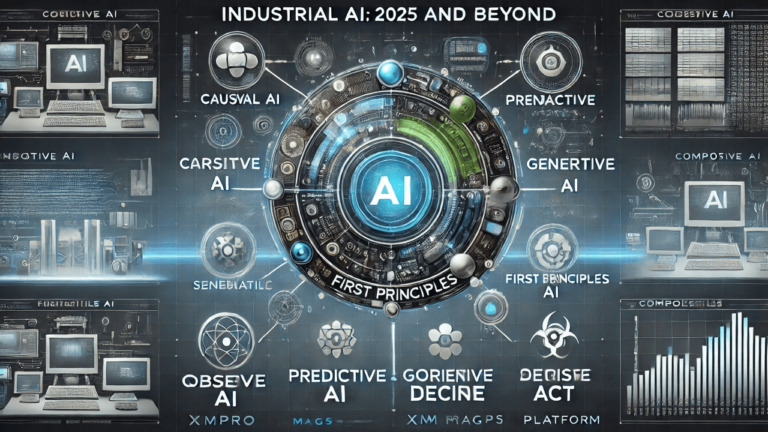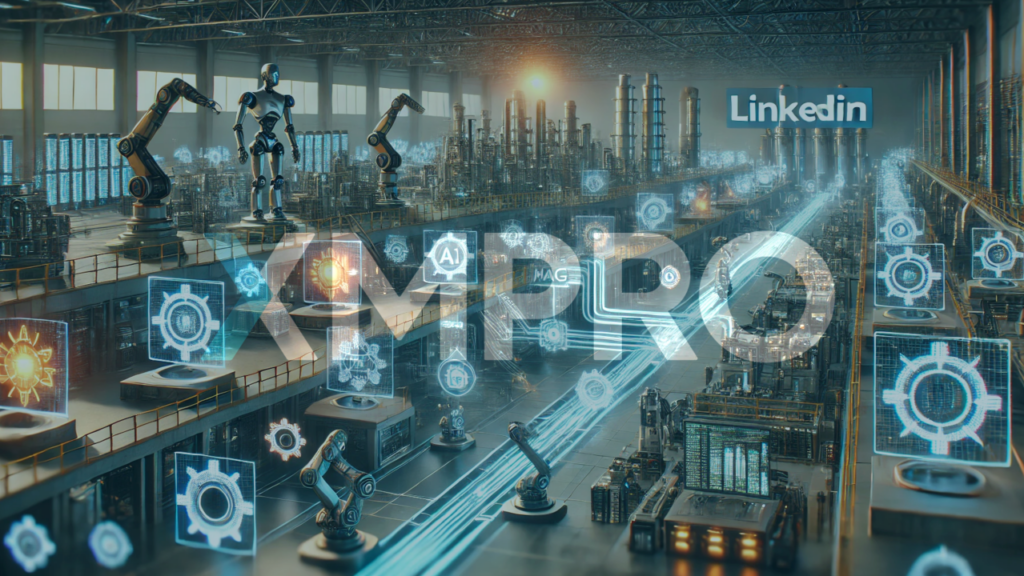
In today’s complex industrial landscape, the ability to process and act on data in real time is no longer just an advantage—it’s a necessity. XMPro’s DataStreams approach, combined with Multi-Agent Generative Systems (MAGS), offers a powerful solution to this challenge.
This integration not only enables real-time data processing but also supports a diverse ecosystem of agent types, making it a versatile tool for solving real-world problems at scale.
The Power of Data Pipelines in Industrial Settings
Data pipelines, like XMPro DataStreams, form the backbone of modern industrial data processing. They offer several key benefits:
- Continuous Data Flow: DataStreams ensure a constant flow of information from various sources across the industrial environment.
- Real-Time Processing: Data is processed as it’s generated, allowing for immediate analysis and action.
- Scalable Architecture: The pipeline approach can handle increasing data volumes as operations grow.
- Agent Diversity: DataStreams support a wide range of agent types, from sophisticated AI to simple scripts.
These features create a strong foundation for deploying intelligent systems that can keep pace with the speed and complexity of industrial operations.
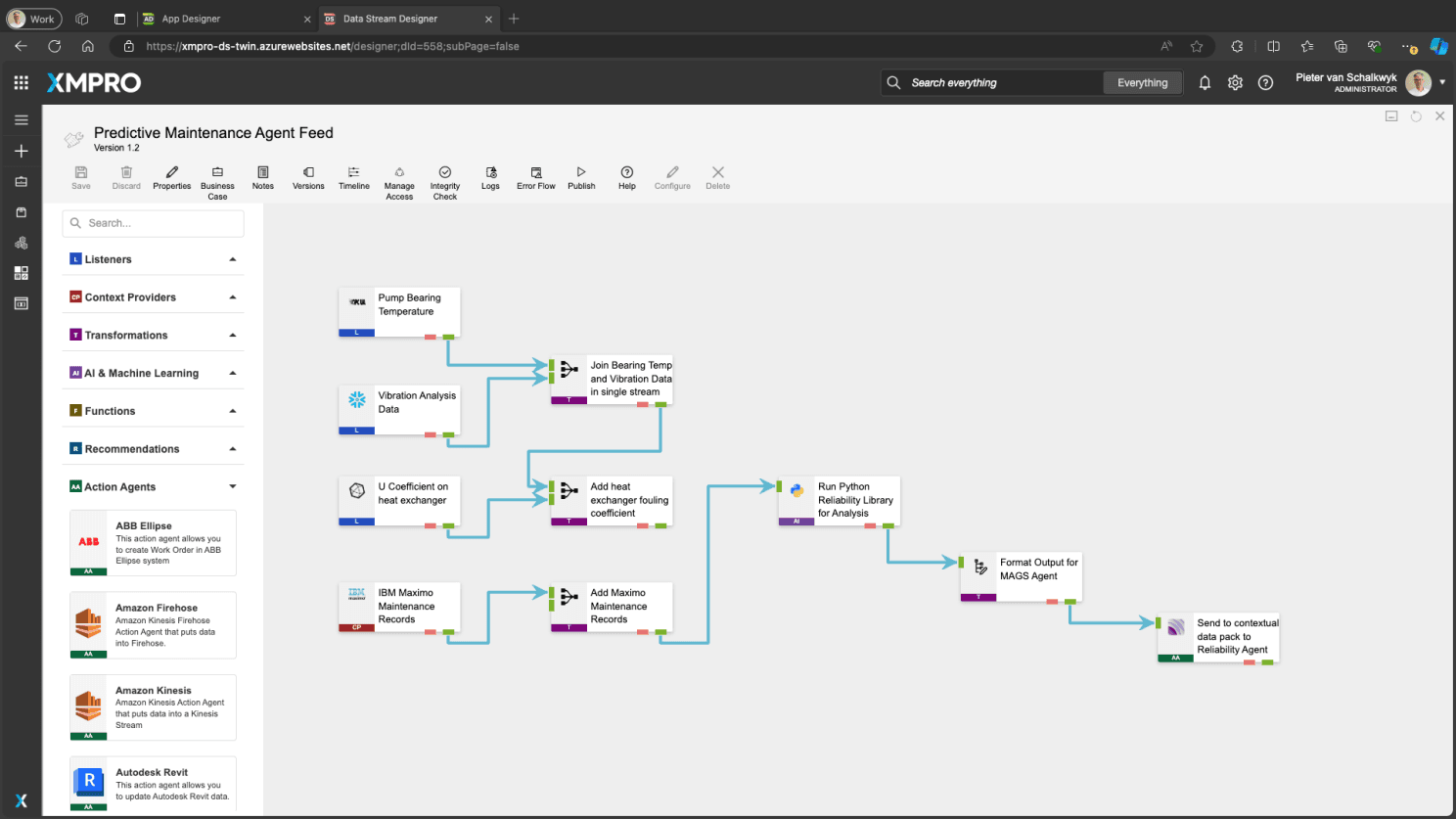
Preparing Real-time Data Input and Engineering Knowledge for a Reliability Agent
Enabling MAGS at Scale
Multi-Agent Generative Systems represent a significant leap forward in industrial AI. When built on robust data pipelines, MAGS can operate at scales previously unattainable. Here’s how:
- Continuous Data Flow:DataStreams ensure a constant flow of information from various sources across the industrial environment.
- Real-Time Processing: Data is processed as it’s generated, allowing for immediate analysis and action.
- Scalable Architecture: The pipeline approach can handle increasing data volumes as operations grow.
- Agent Diversity: DataStreams support a wide range of agent types, from sophisticated AI to simple scripts.
This scalability and flexibility allow MAGS to tackle large-scale industrial challenges that would overwhelm traditional systems.
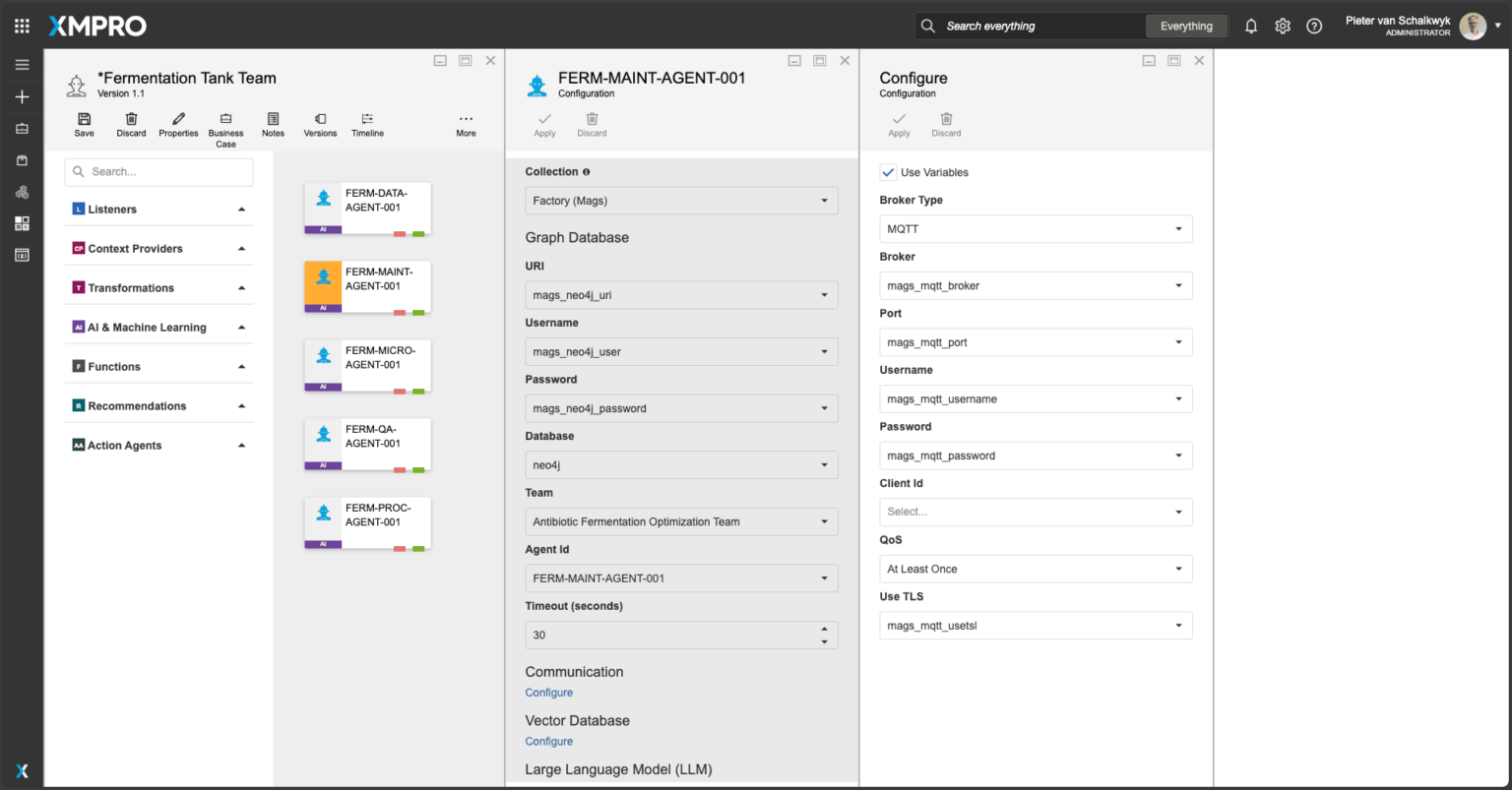
Configuring an XMPro MAGS Agent Instance in XMPro DataStream Designer
Versatility in Agent Deployment
XMPro DataStreams supports a wide range of agent types, allowing businesses to deploy the right kind of agent for each specific task or problem:
XMPro’s Sophisticated Reasoning Agents:
- Complex decision-making capabilities
- Ability to form multi-agent teams
- Continuous learning from real-time data
Procedural Python Agents:
- Custom agents using XMPro’s Python Agent feature as “contractors“
- Integration with frameworks like AutoGen and LangGraph
- Rapid development and deployment for specific tasks
Third-Party and Open-Source Agents:
- Compatibility with various AI technologies
- Easy integration of specialized industry-specific agents
This diverse ecosystem of agents, all operating within the same data pipeline, allows businesses to address a wide range of challenges efficiently and effectively.
Solving Real-World Problems
The combination of XMPro DataStreams and MAGS addresses several critical industrial needs:
- Predictive Maintenance: Advanced XMPro agents analyze equipment data in real-time, predicting failures before they occur.
- Supply Chain Optimization: A mix of sophisticated and simple agents process data from multiple points in the supply chain, identifying bottlenecks and suggesting improvements.
- Energy Management: MAGS can monitor energy usage across facilities, with different agent types handling various aspects of the process.
- Quality Control: Python-based agents handle routine inspections, while more complex agents manage overall quality strategies.
These real-world applications demonstrate the practical value of integrating diverse agent types within a unified data pipeline system.
The XMPro DataStreams Advantage
XMPro’s DataStreams approach offers unique benefits for implementing MAGS:
- No-Code Configuration: DataStreams can be set up without extensive coding, making it easier to deploy and adjust agent systems.
- Flexible Integration: XMPro easily connects with existing industrial systems and various agent types, allowing for gradual adoption of MAGS.
- Visual Workflow Design: Complex agent interactions can be mapped out visually, improving understanding and management of the system.
- Agent Ecosystem Support: The platform accommodates a wide range of agent types, from simple scripts to advanced AI models.
These features make XMPro DataStreams particularly well-suited for businesses looking to implement a diverse, scalable MAGS in their operations.
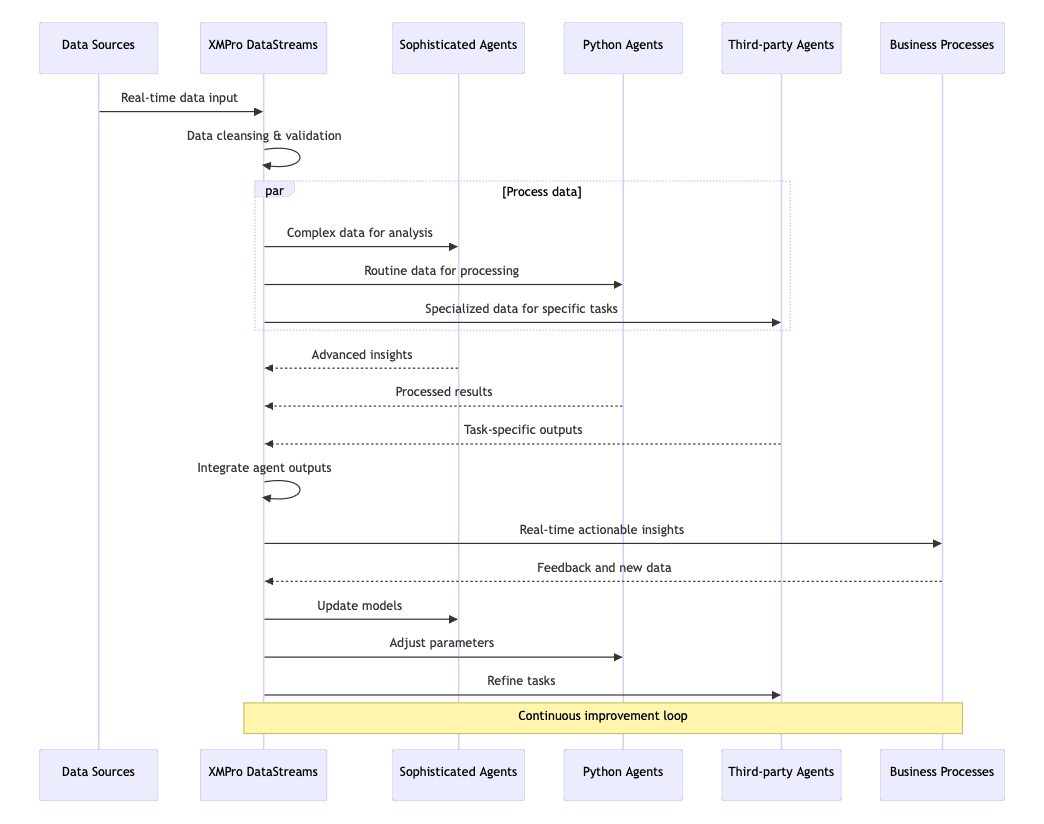
XMPro MAGS using real-time data pipelines
Overcoming Implementation Challenges
While the benefits are clear, implementing MAGS with data pipelines does come with challenges. Here’s how the XMPro approach addresses common issues:
- Data Quality: DataStreams include built-in data cleansing and validation, ensuring all agent types work with reliable information.
- System Complexity: The visual nature of XMPro’s platform helps manage the complexity of multi-agent systems, even with diverse agent types.
- Scalability Concerns: XMPro’s cloud-native architecture allows for easy scaling as data volumes and processing needs grow.
- Agent Interoperability: The unified data pipeline ensures smooth communication between different types of agents.
By addressing these challenges, XMPro makes it feasible for businesses to adopt and scale MAGS technology without overwhelming their existing operations.
Looking to the Future
As industrial processes become more complex, the need for intelligent, scalable, and flexible systems will only grow. The integration of MAGS with data pipeline approaches like XMPro DataStreams, supporting various agent types, represents a significant step forward.
This combination offers the speed, flexibility, and intelligence needed to tackle tomorrow’s industrial challenges.
Businesses that adopt this approach now will be well-positioned to:
- Improve operational efficiency through continuous, AI-driven optimization using the most appropriate agent types for each task.
- Respond more quickly to market changes and operational issues with a diverse agent ecosystem.
- Scale their AI capabilities alongside their business growth, easily integrating new agent technologies as they emerge.
The integration of Multi-Agent Generative Systems with data pipeline approaches like XMPro DataStreams offers a practical and powerful solution for modern industrial challenges.
By enabling real-time data processing, scalable AI deployment, and support for diverse agent types, this approach provides businesses with the tools they need to solve complex, real-world problems.
As we move forward, the ability to harness the power of data and AI at scale, while maintaining the flexibility to use the right tool for each job, will become increasingly crucial.
Companies that embrace these technologies now will be better prepared to meet the challenges and opportunities of tomorrow’s industrial landscape, with a versatile, efficient, and intelligent operational foundation.
I previously wrote more on this in Part 3 – AI at the Core: LLMs and Data Pipelines for Industrial Multi-Agent Generative Systems.
Our GitHub Repo has more technical information if you are interested. You can also contact myself or Gavin Green for more information.










